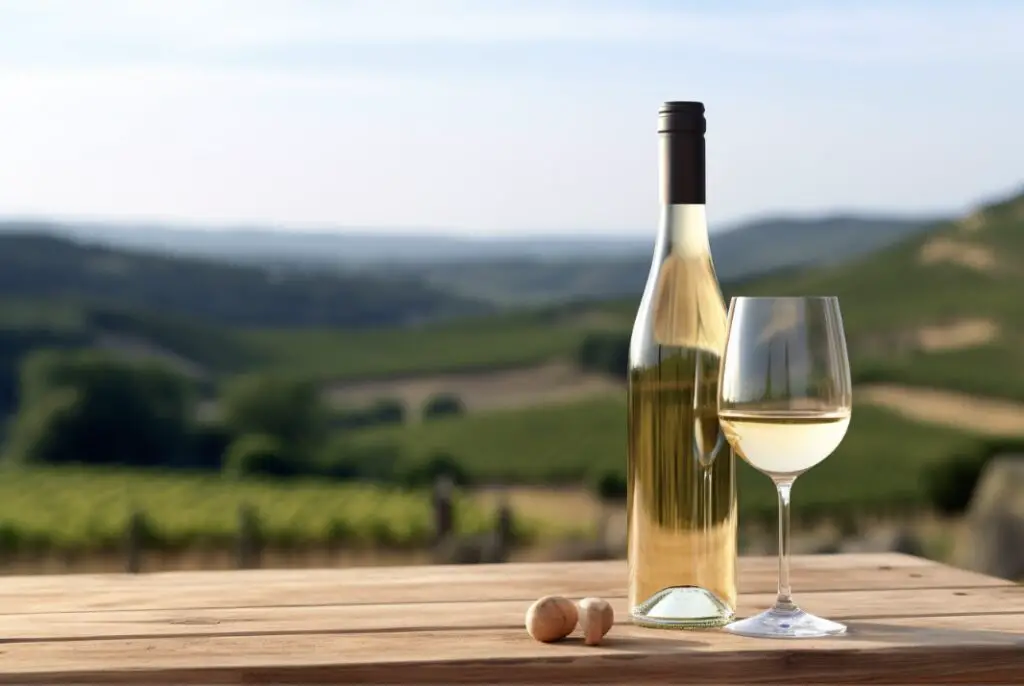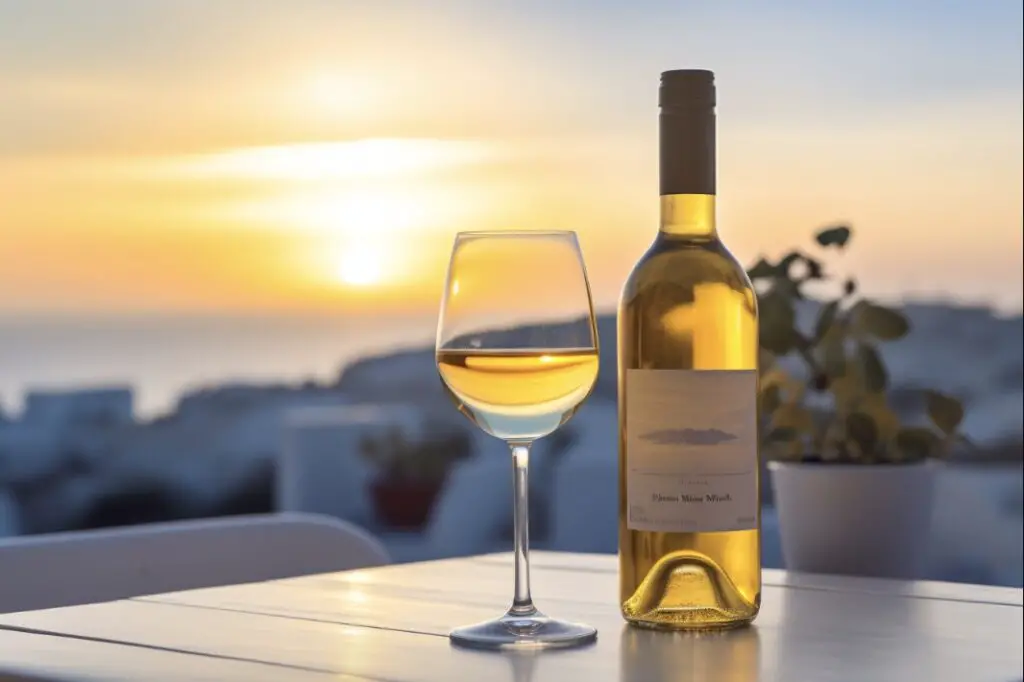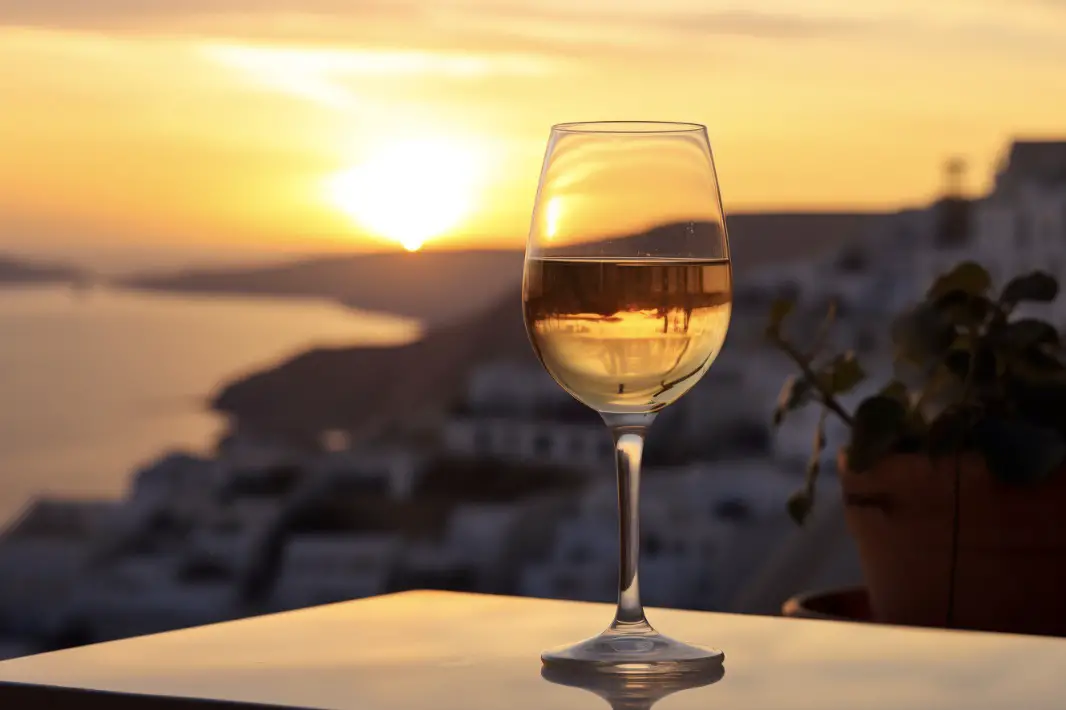Sancerre, the darling of the Loire Valley, is a wine that has captured the hearts and palates of many wine lovers.
Its crisp acidity, high minerality, and unique flavors make it a popular choice for those seeking a refreshing and versatile white wine.
But what if you’re looking for something a little different, yet still reminiscent of a classic Sancerre? In this blog post, we will explore 5 alternative wines that share similar characteristics with Sancerre, but each with its own unique flair.
Our exploration will include:
1. Pouilly-Fumé
2. Albariño
3. Vermentino
4. Assyrtiko
5. Gruner Veltliner
So let’s dive in and discover some delicious wines that will satisfy your Sancerre craving.
1. Pouilly-Fumé
Origins and Taste Profile
Pouilly-Fumé hails from the same region as Sancerre, the Loire Valley. It is also made from the same grape variety, Sauvignon Blanc.
Pouilly-Fumé is characterized by its smoky, flinty minerality, which is the result of the unique terroir of the region. The soil is rich in flint, which imparts a distinctive smoky aroma to the wine, hence the name “Fumé.”
Just like Sancerre, Pouilly-Fumé offers crisp acidity and citrus flavors, such as grapefruit and lemon, as well as green apple and gooseberry notes. However, the smoky minerality is what sets it apart and gives it a more complex flavor profile.
Pros and Cons
Pros:
- Similar to Sancerre in terms of acidity and citrus flavors
- Unique smoky minerality adds complexity
- Made from the same grape variety and region
Cons:
- The smoky flavor may not be to everyone’s taste
2. Albariño
Origins and Taste Profile
Albariño is a white grape variety originating from the Rías Baixas region of Spain. This wine is known for its high acidity and pronounced minerality, making it a great alternative to Sancerre. Albariño offers a zesty citrus palate, with flavors of lemon, lime, and grapefruit, as well as stone fruit notes like peach and apricot. The wine also presents a distinctive saline quality, reminiscent of the ocean breeze that sweeps through the coastal vineyards.
Pros and Cons
Pros:
- High acidity and pronounced minerality
- Zesty citrus flavors with a touch of stone fruit
- Unique saline quality adds complexity
Cons:
- May not have the same grassy or herbaceous characteristics as Sancerre
3. Vermentino
Origins and Taste Profile
Vermentino is a white grape variety found primarily in the coastal regions of Italy, particularly in Sardinia, Liguria, and Tuscany. Like Sancerre, Vermentino is known for its crisp acidity and mineral-driven profile.

The wine offers flavors of citrus fruit like lemon and grapefruit, as well as green apple, pear, and a hint of almond. The minerality in Vermentino is often characterized by a slightly bitter, saline finish, which adds complexity and depth to the wine.
Pros and Cons
Pros:
- Crisp acidity and mineral-driven profile
- Citrus fruit flavors with hints of green apple, pear, and almond
- Slightly bitter, saline finish adds complexity
Cons:
- May not be as widely available as Sancerre
4. Assyrtiko
Origins and Taste Profile
Assyrtiko is a white grape variety native to the Santorini region of Greece. This wine is known for its bracing acidity and pronounced minerality, making it an excellent alternative to Sancerre.

Assyrtiko offers flavors of lemon, lime, and grapefruit, as well as a unique volcanic minerality, which comes from the volcanic soils of Santorini. The wine also has a distinct saline quality and a slightly bitter finish, adding to its complexity.
Pros and Cons
Pros:
- Bracing acidity and pronounced minerality
- Citrus fruit flavors with a unique volcanic minerality
- Saline quality and slightly bitter finish add complexity
Cons:
- May not have the same grassy or herbaceous characteristics as Sancerre
5. Gruner Veltliner
Origins and Taste Profile
Gruner Veltliner is a white grape variety from Austria that shares many similarities with Sancerre. This wine is characterized by its bright acidity and distinctive minerality. Gruner Veltliner offers flavors of green apple, lime, and white pepper, along with a subtle herbaceous quality that is reminiscent of Sancerre’s grassy notes. The wine’s minerality often presents as a wet stone or slate character, which adds depth and complexity.
Pros and Cons
Pros:
- Bright acidity and distinctive minerality
- Green apple, lime, and white pepper flavors with a subtle herbaceous quality
- Wet stone or slate minerality adds depth and complexity
Cons:
- May not have the same citrus-forward profile as Sancerre
What Would I Choose?
In conclusion, there are many fantastic alternatives to Sancerre that offer similar acidity, minerality, and flavor profiles, while also showcasing their own unique characteristics. Each of the wines we’ve explored – Pouilly-Fumé, Albariño, Vermentino, Assyrtiko, and Gruner Veltliner – offers something different and exciting for your palate.
As a personal recommendation, I would encourage you to try Assyrtiko from Santorini, Greece. Its bracing acidity, pronounced minerality, and unique volcanic character make it a truly memorable wine that stands out from the crowd.
However, I also recommend exploring all of the wines mentioned in this post, as each has its own charm and will undoubtedly provide a delightful alternative to the classic Sancerre.
FAQs
What wine is similar to Pouilly-Fumé?
A wine that is similar to Pouilly-Fumé is Sancerre. Both wines are made from Sauvignon Blanc grapes and come from the Loire Valley in France. They share similar characteristics such as crisp acidity, citrus flavors, and a mineral-driven profile.
Which is better Pouilly-Fumé or Sancerre?
Both Pouilly-Fumé and Sancerre are renowned French white wines made from Sauvignon Blanc grapes. While both regions produce high-quality wines, the choice between Pouilly-Fumé and Sancerre ultimately comes down to personal preference. Pouilly-Fumé tends to exhibit a smokier, flinty character with citrus and herbaceous notes, while Sancerre often showcases a more mineral-driven profile with crisp acidity and flavors of grapefruit, green apple, and sometimes a touch of floral or herbal nuances. Exploring wines from both regions can help you determine which style resonates better with your taste preferences.
Is Sauvignon Blanc similar to Sancerre?
Yes, Sauvignon Blanc is similar to Sancerre. Sancerre is actually a region in the Loire Valley of France that produces Sauvignon Blanc wines. Therefore, Sancerre is a specific style of Sauvignon Blanc, known for its crisp acidity, citrus flavors, and mineral notes. However, Sauvignon Blanc is produced in various regions around the world, and the style can vary depending on the climate and winemaking techniques used.
What is the difference between Sancerre and Pouilly-Fumé?
Sancerre and Pouilly-Fumé are both white wines from the Loire Valley in France, made from Sauvignon Blanc grapes. The main difference lies in their terroir and winemaking styles. Sancerre generally exhibits a crisp, mineral-driven character with vibrant acidity and flavors of citrus, green apple, and herbs.
Pouilly-Fumé, on the other hand, often displays a smoky or flinty note, with a slightly richer and fuller-bodied profile, showcasing flavors of grapefruit, white peach, and sometimes a hint of gunflint. These distinctions are a result of variations in soil composition and microclimate between the two regions. Ultimately, personal preference plays a key role in choosing between these two esteemed wines.
What wine is similar to Sancerre?
A wine that is similar to Sancerre is Pouilly-Fumé. Both are white wines made from Sauvignon Blanc grapes in the Loire Valley of France. They share similar characteristics of high acidity, crispness, and flavors of citrus, green apple, and mineral notes.
Is Sancerre similar to Sauvignon Blanc?
Yes, Sancerre is a type of white wine made from Sauvignon Blanc grapes. It is produced in the Sancerre region of the Loire Valley in France. Sancerre wines are known for their crisp acidity, citrus flavors, and herbaceous notes, which are characteristic of the Sauvignon Blanc grape variety.




